Dean Fleming was born and raised in Sonora, CA, the gateway to Yosemite Valley. Once the youngest certified professional climbing guide in the country, he eventually combined his love of writing, photography, earth science, and rock climbing into a career of sharing his stoke and expertise through publishing. Dean is the author of the Columbia Bouldering Guidebook and the founder and editor of California Climber Magazine. In this series, he’ll be sharing a taste of some lesser-known, high-quality climbing areas in our favorite state, plus how to take care of these special places for years to come.
Words and images by Dean Fleming. This article was originally published in the Winter 2016 issue of CA Climber.
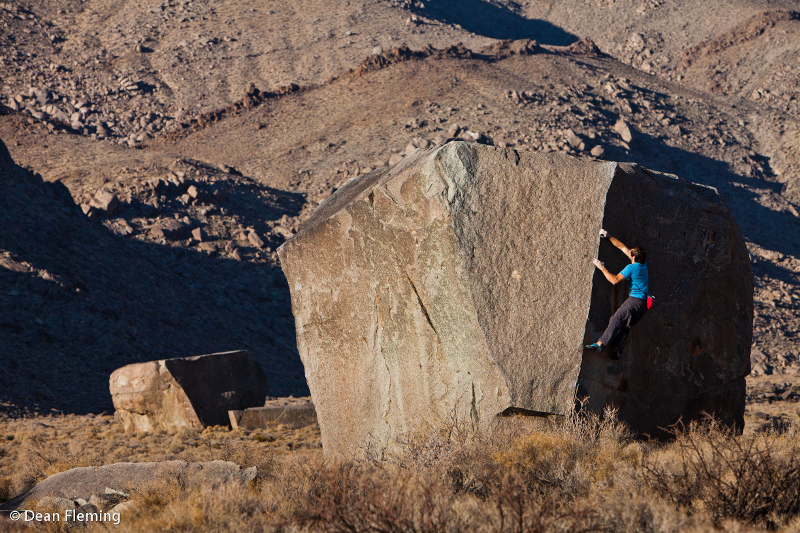
The van’s interior threw out a familiar rattle of pots and pans as I traversed the 15 miles of single lane washboard that separate the small town of Big Pine in California’s Eastern Sierra Nevada Basin with the grand western slope of the White Mountains of Inyo County. Twin F-18 fighter jets barreled just a few hundred feet overhead in a flight pattern from the nearby Ridgecrest Air Force Base. Out the window lay the rusted carcass of a 1970s-era washing machine, riddled with bullet holes. For those newly acquainted with the Eastern Sierra Basin, these modern inflections are the camouflages that so often conceal the sacred nature of this incredible landscape. The impact of man on this region in the last 100 years is vast and hugely discomforting. Still, as beams of light stream through the peaks of the High Sierra to the west and shadows creep across the valley toward the White Mountains, this area’s rugged beauty is uncanny.
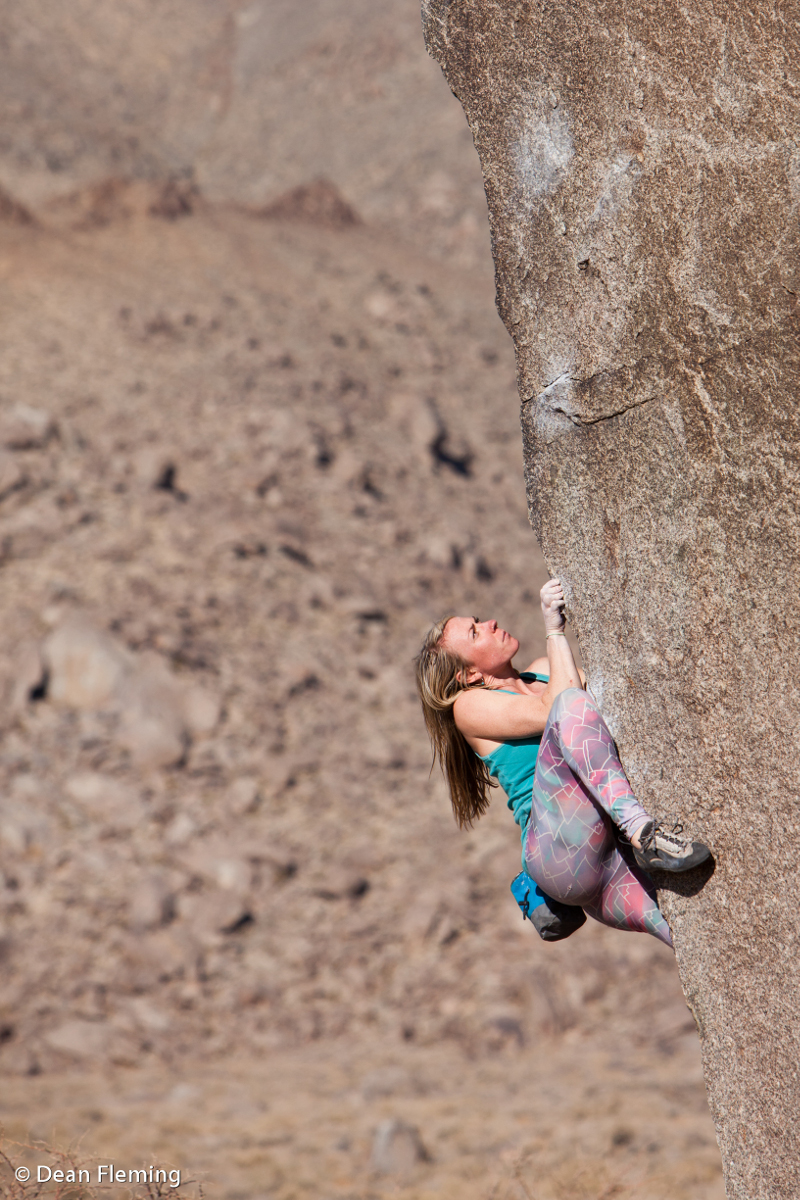
The word “Inyo” translates roughly in native Paiute to “dwelling place of the great spirit.” With even a quick glance at the towering ranges and sweeping drainages, this rendition seems accurate. Yet as our experiences grow more intimate with this region the idea steadily grows far from interpretation. With time the Inyo transforms into a place of unquestionable holiness, a place where harsh elements and a seemingly desolate landscape interconnect with and somehow support the delicate yet hardly noticeable life cycles of hearty high desert species. As I bumped down the dirt road I thought about my survival rate, had I theoretically been tossed out into this landscape with nothing but the clothes on my back. I figured I’d last 48 hours, maybe 72 if I’d gotten lucky and found shelter.
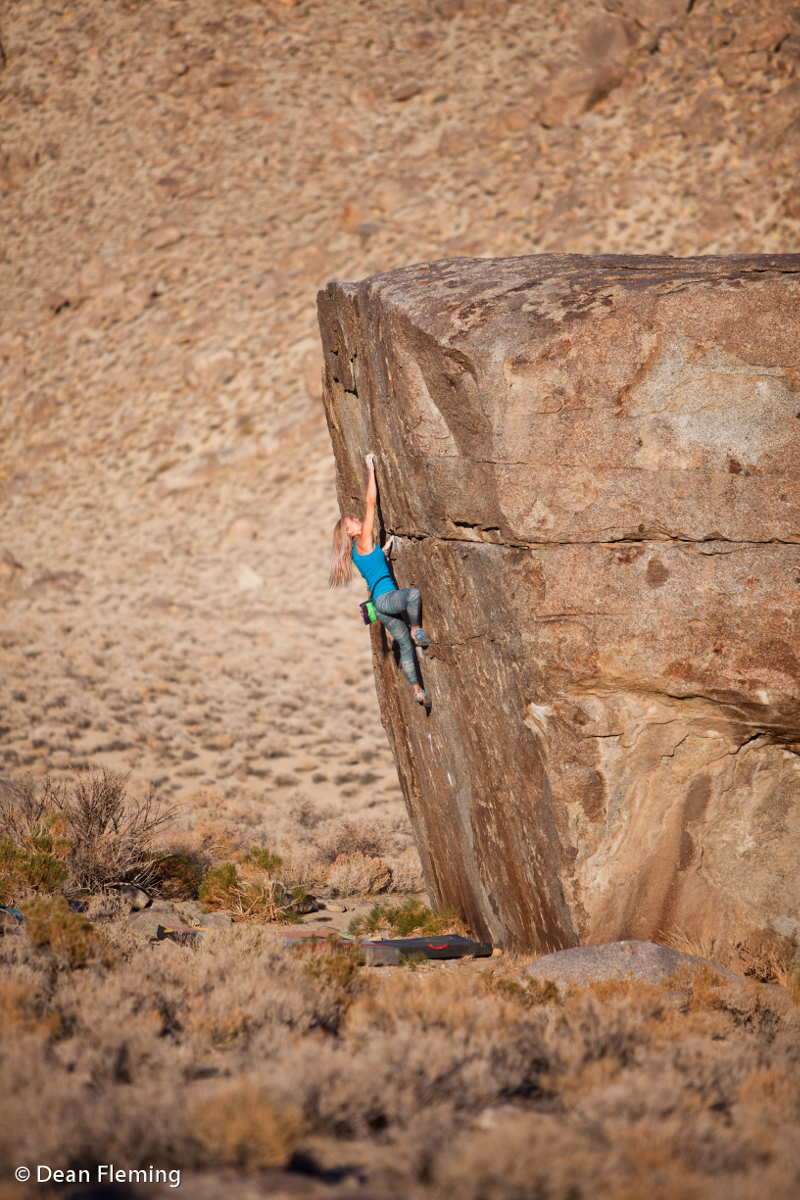
Backing down a 1,000-foot stretch of single-lane dirt road, I knew I was lost again. For three years I had been visiting this area to climb on the Crystal Ridge Boulders; a very small zone consisting of three massive angular blocks that stand solemnly in the center of a massive alluvial fan at the base of the White Mountains. Anyone with a general understanding of geology and a sense of the area could probably find these boulders, yet they are sneakily tucked behind a small glacial moraine and only found after a long series of correct turns on nearly fifteen miles of dirt roads. Cursing my poor memory and the faulty directions I gathered from a website early that day, I pulled back onto the “main” road and headed south along the base of the Whites. Once again, intuition and foggy memories would lead the way.
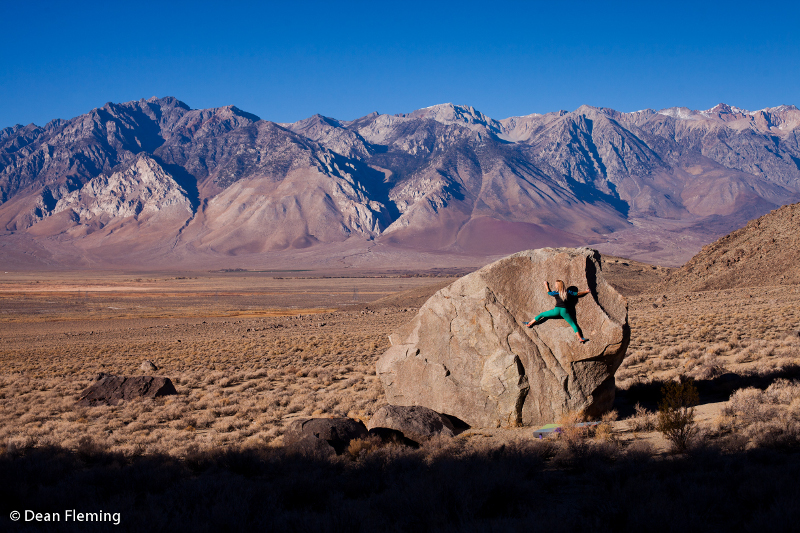
We finally arrived at camp as dusk fell. The wind began to howl down from the High Sierra peaks just a few miles to the west. Wearing T-shirts on the drive to the boulders, we now quickly donned heavy jackets and layers to fend off the driving cold.
The Inyo is a place where temperatures can easily rise or fall 50 degrees in less than 50 minutes, yet a haphazardly tossed banana peel can take 50 years to fully decompose.
The Inyo is a place where temperatures can easily rise or fall 50 degrees in less than 50 minutes, yet a haphazardly tossed banana peel can take 50 years to fully decompose. What may seem like a barren patch of dry dirt can hold the seeds of a thousand wildflowers. These species of flowering plants can lay in wait for decades until the magical combination of warm temperatures and afternoon thunderstorms trigger vibrant blooms. Surveying the dusty slopes of the Basin and Range, with its near-non-existent water supply and sandy soils, it becomes obvious that the survival of the resilient creatures that inhabit this land is nothing short of miraculous.
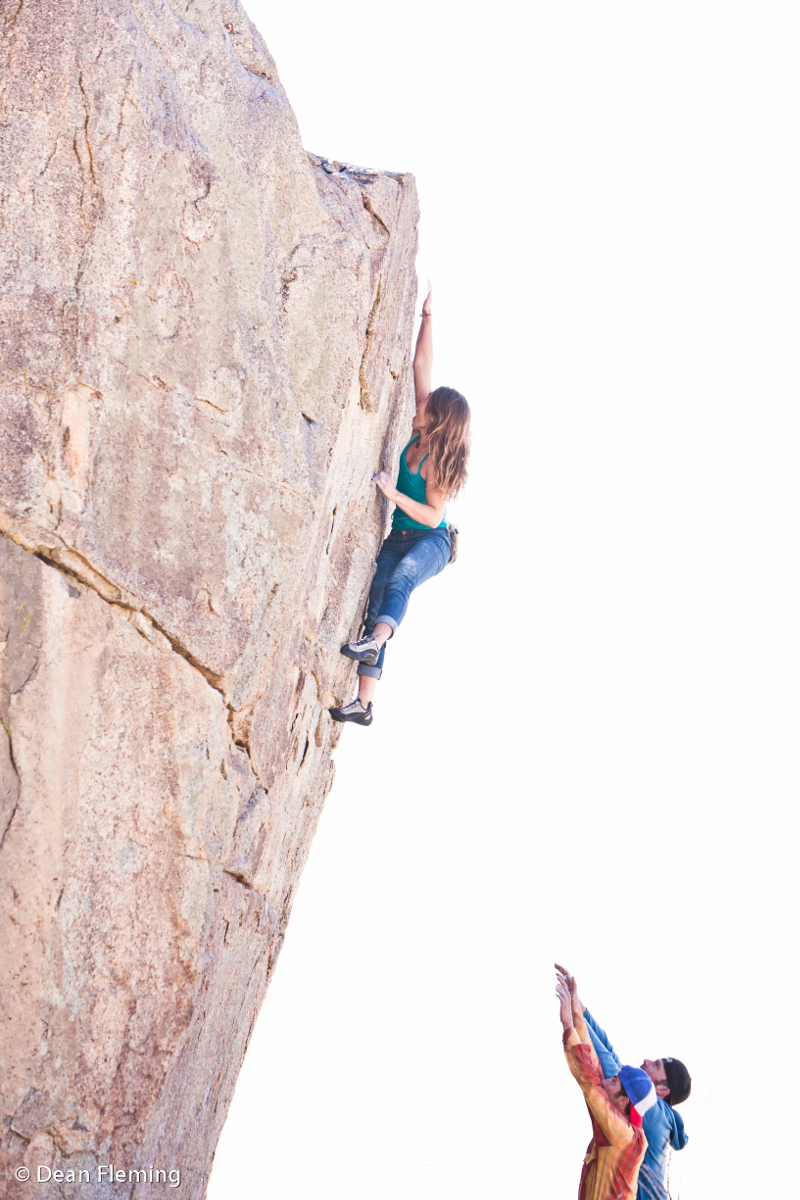
The following day we lounged like lizards in the sun while friends shuffled pads under the few outstanding lines at Crystal Ridge. Discounting the warm-up boulder, which does have a few fine climbs in the V0 to V3 range, the bulk of the bouldering at Crystal Ridge can be found on the sharp arêtes and striking highball faces of two massive blocks. The highest quality problems here typically fall between V3 and V7. What the area lacks in quantity and difficulty, it quickly compensates for with excellent quality rock, intricate sequences and committing final moves.
… the bulk of the bouldering at Crystal Ridge can be found on the sharp arêtes and striking highball faces of two massive blocks.
By 3pm the wind sped to 30 mile per hour gusts as an impending snow storm engulfed the Sierra Crest to the west. A wall of dust rose a few hundred feet tall from the basin below and steadily pushed toward the White Mountains. With sandblasted faces we tried to summit a V6 slab climb left of a west-facing arête. The wind threw our pads into the air as a cloud of dust overcame our position in the wash. Miles from a main road, as we retreated back to the parking area, we all agreed it was about as adventurous as you’d like a day of bouldering to get.
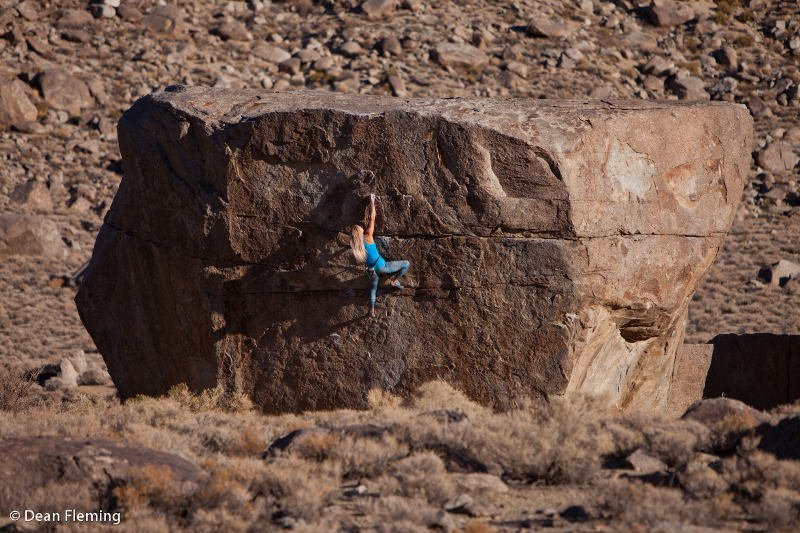
According to the guidebook Bishop Area Rock Climbs by Peter Croft and Marty Lewis, the first documented climbing at the Crystal Ridge Boulders occurred sometime around the turn of the century, mostly by Dimitri Barton, Colin Broadwater, Greg Haverstock, and Andy Puhval. Although various waves of psyched locals have discovered and re-discovered the problems at Crystal Ridge over the years, this area has been typically thought of as a small-yet-beautiful, off-the-beaten-track zone that hosts a handful of excellent problems on quality rock. The Crystal Ridge area is quite possibly the smallest bouldering zone on the Eastern Sierra. It can seem especially minuscule when compared to giant zones like the Buttermilks or the Tablelands of Bishop. Yet the landscape here is particularly brilliant, with a completely unencumbered view of the grand Sierra Nevada Crest to the west its primary attraction.
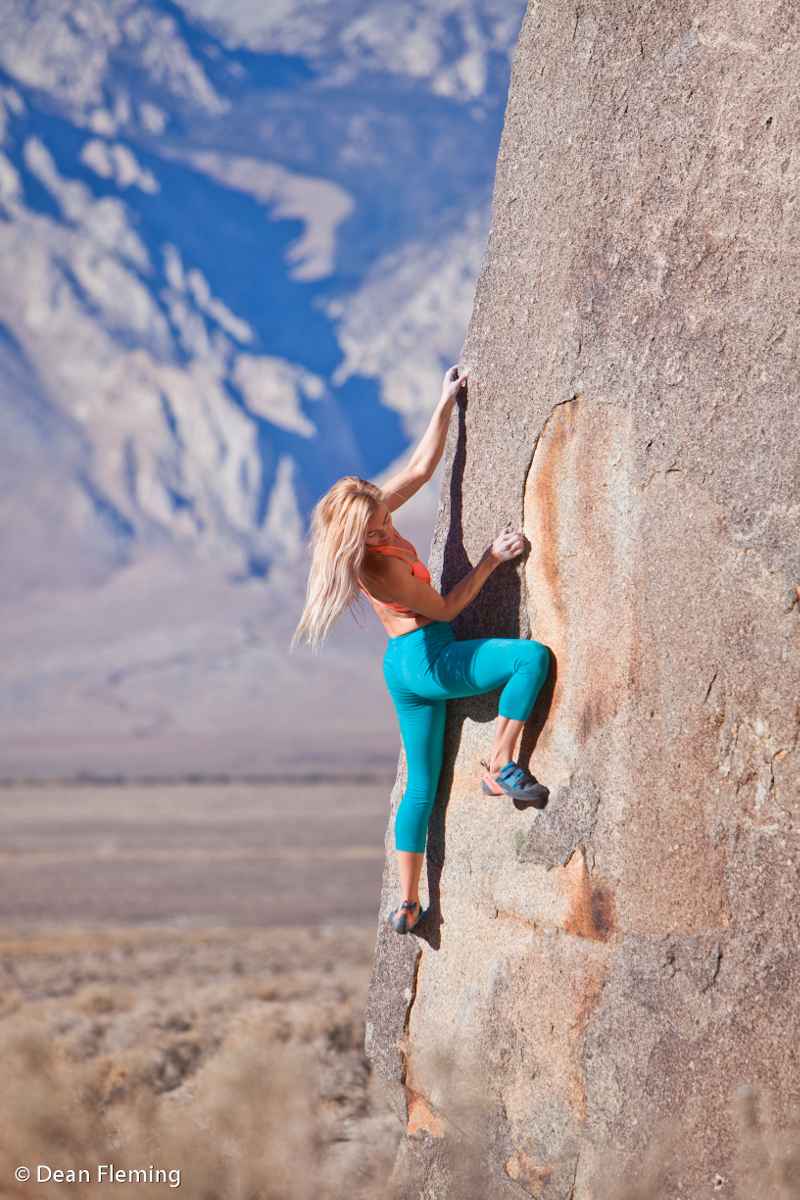
Special Concerns
The Crystal Ridge Boulders are sacred area to the Paiute-Shoshone tribes since before written history, as well as for generations of Bishop Area rock climbers. Please treat this beautiful zone with the utmost respect and leave it as you found it. Remember to stay on existing roadways, park in existing parking areas, and do not camp in the parking area for the boulders. Please respect all fire restrictions in this area and do not build fire rings or enhance any areas in which you may be camping. The options for bathroom breaks at the Crystal Ridge Boulders are very limited. Please consider bringing “wag-bags” and a 5-gallon bucket to remove your waste from this region. At a minimum, bring a shovel so that you can dig a proper hole.
Guidebook: Bishop Area Rock Climbs by Peter Croft and Marty Lewis

